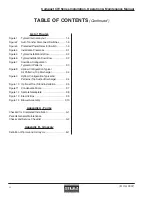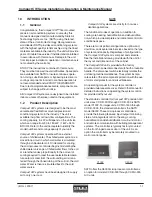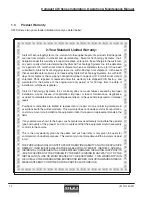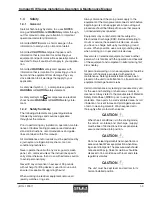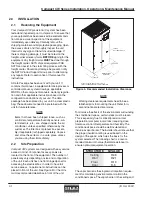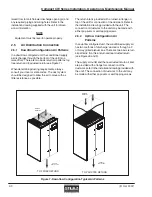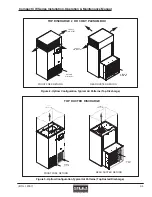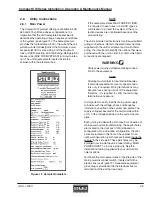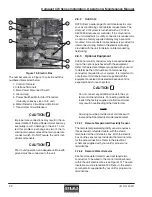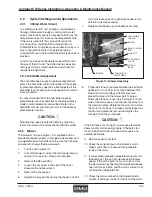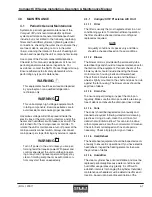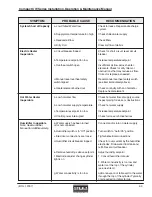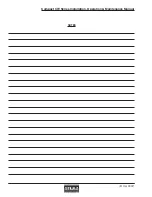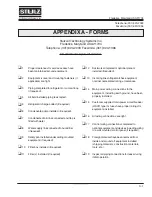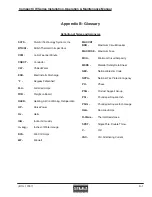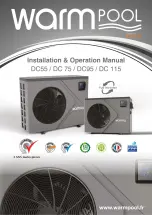
(© Oct, 2007)
Compact CW Series Installation, Operation & Maintenance Manual
Air Technology Systems, Inc.
2-8
2.8
Utility Connections
2.8.1
Main Power
The
Compact CW product offering is available in 208,
460 and 575 volt three-phase configurations. It is
imperative that the unit nameplate be examined to
determine the operating voltage, frequency and phase
of the system (see Figure 12). The nameplate also
provides the full load amps (FLA), the current the unit
will draw under full design load, the minimum circuit
ampacity (MCA) for wire sizing, and the maximum
fuse or HACR (Heating, Air Conditioning, Refrigeration)
breaker size (MAX FUSE/CKT BKR) for circuit protec-
tion. The unit's nameplate is located inside the
cabinet, within the electrical box.
NOTE
If the nameplate states MAX FUSE/CKT BKR,
it is required to use fuses or a HACR type cir-
cuit breaker to protect the system. Other pro-
tection devices are not allowed based upon the
product listing.
The unit is provided with terminals for all required field-
wiring connections. Refer to the electrical schematic
supplied with the unit for all power and control field-
wiring. It is important to identify the options that were
purchased with the unit in order to confirm which field
connections are required.
WARNING
Verify power is turned off before making connec-
tions to the equipment.
NOTE
All wiring must conform to local and national elec-
trical code requirements. Use of copper conduc-
tors only is required. Wiring terminations may
become loose during transit of the equipment;
therefore, it is required to verify that all wiring
terminations are secure.
It is important to verify that the main power supply
coincides with the voltage, phase and frequency
information specified on the system nameplate. The
supply voltage measured at the unit must be within
±10% of the voltage specified on the system name-
plate.
Each unit is provided with pilot holes for connection of
main power and control field-wiring. These pilot holes
are located on the
Compact CW unit based on
configuration. On a downflow configuration, the pilot
holes are located in the floor of the cabinet. On an
upflow configuration, pilot holes are located inside the
cabinet in the side wall. These pilot holes may be
enlarged from inside the unit. A label stating "MAIN
POWER INPUT" is in close proximity. See the
installation drawing supplied with your unit for pilot
hole locations.
Terminate the main power wires at the line side of the
main power disconnect switch, located within the
electric box (see Figure 13). A separate equipment
ground lug is provided within the electrical box for
termination of the earth ground wire.
Figure 12- Sample Nameplate


